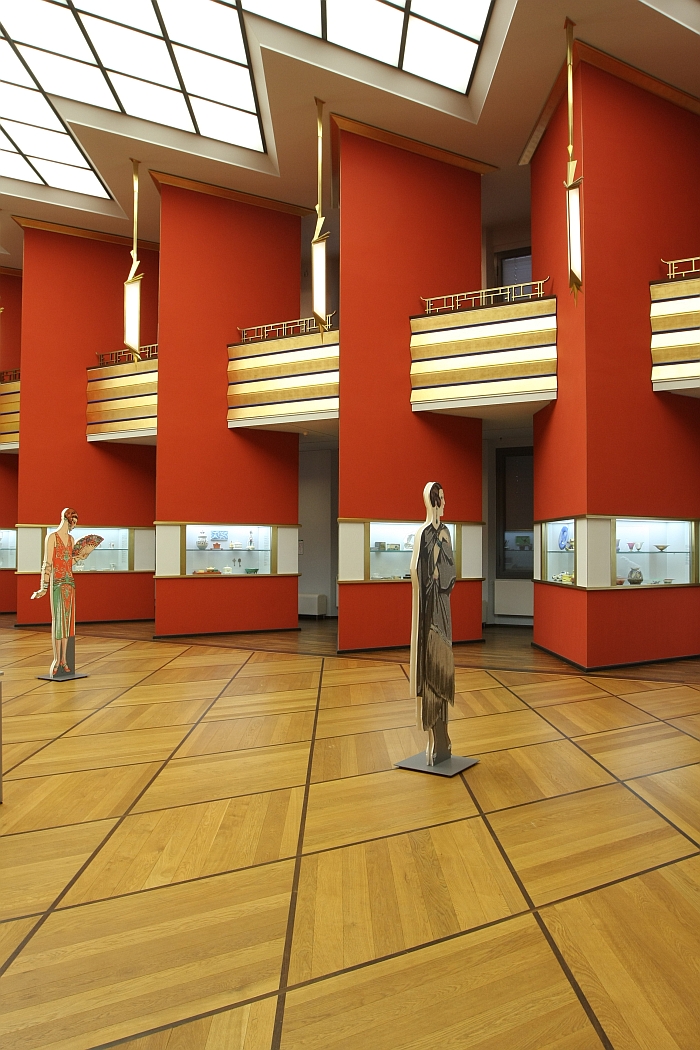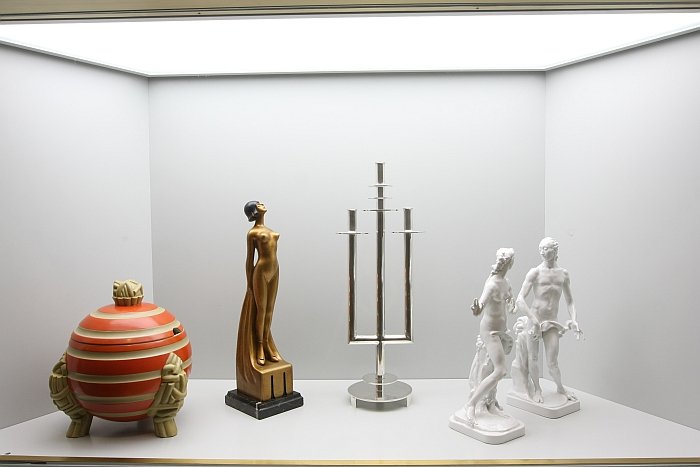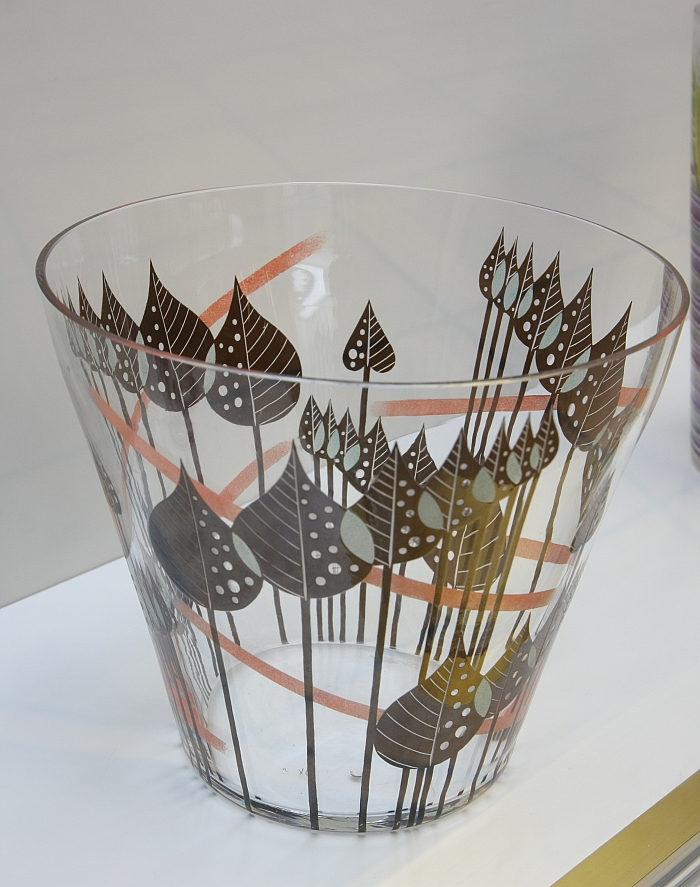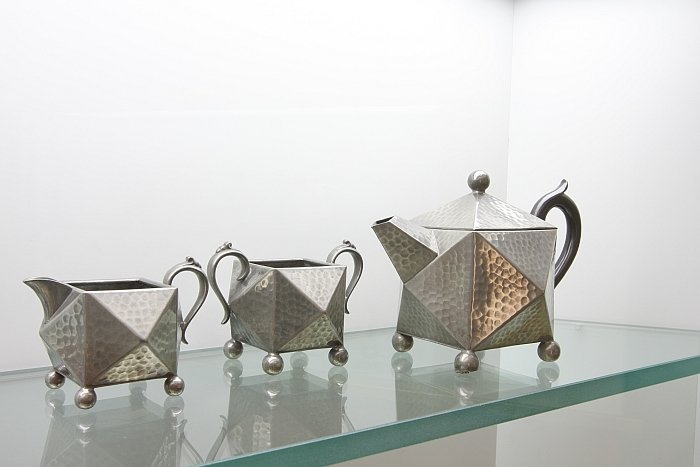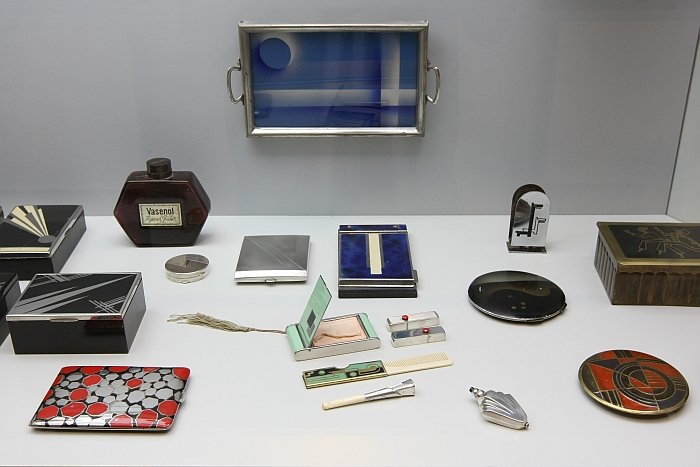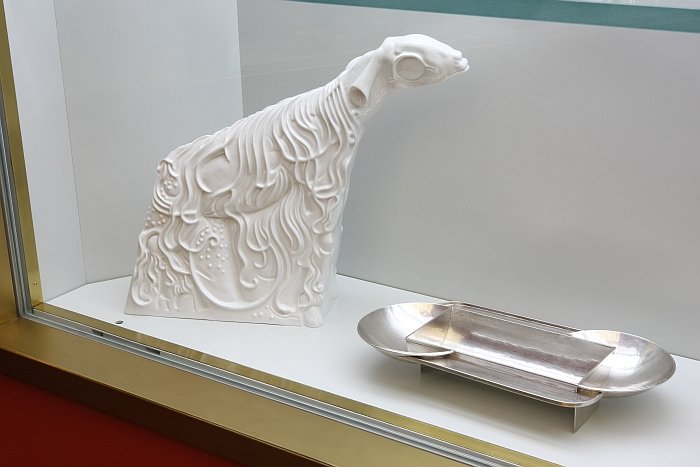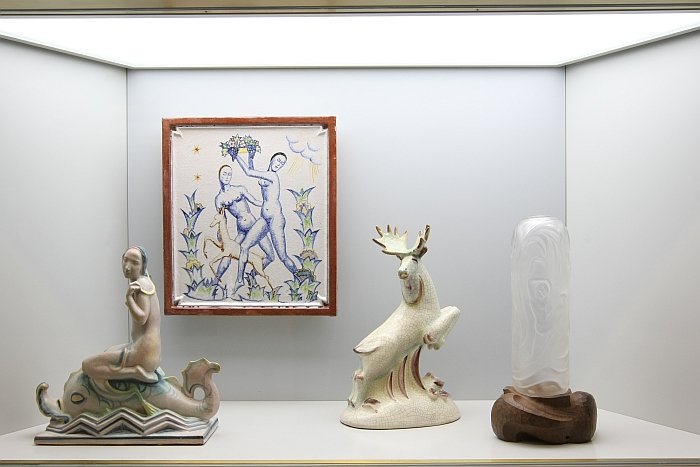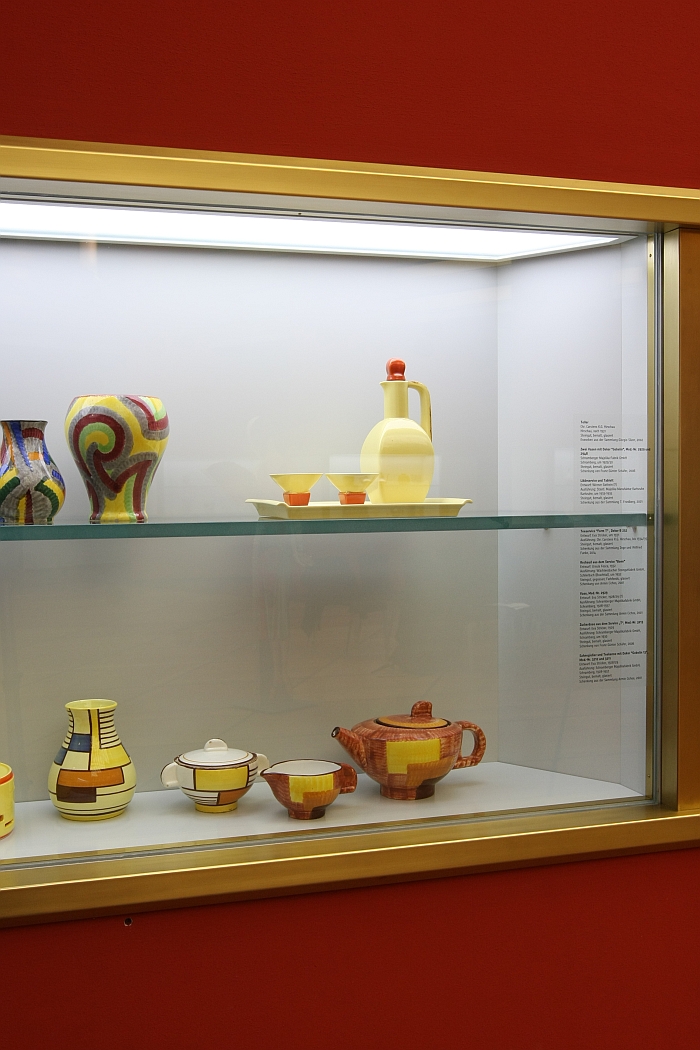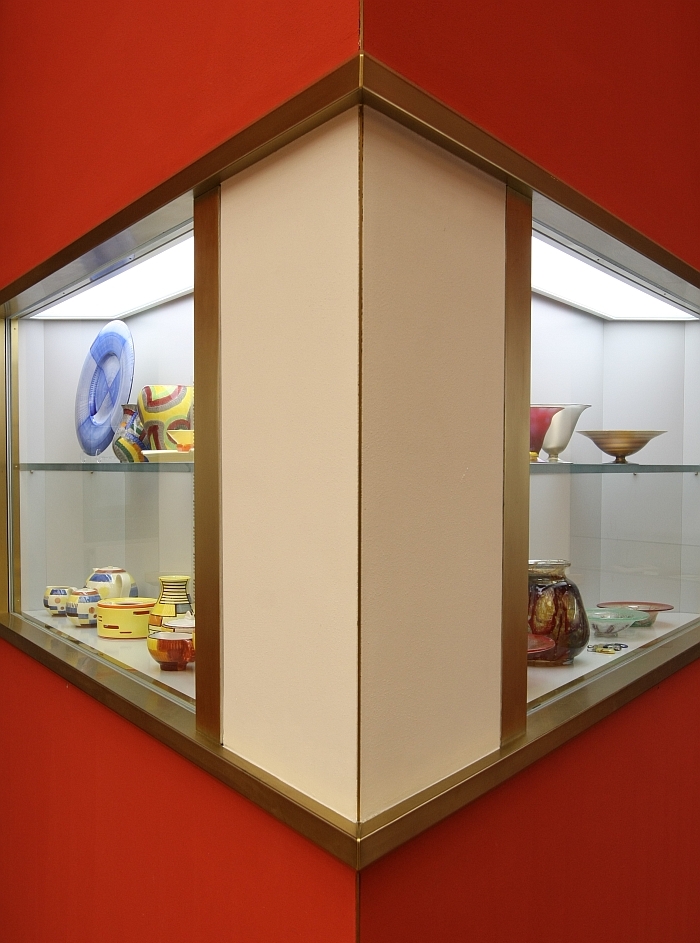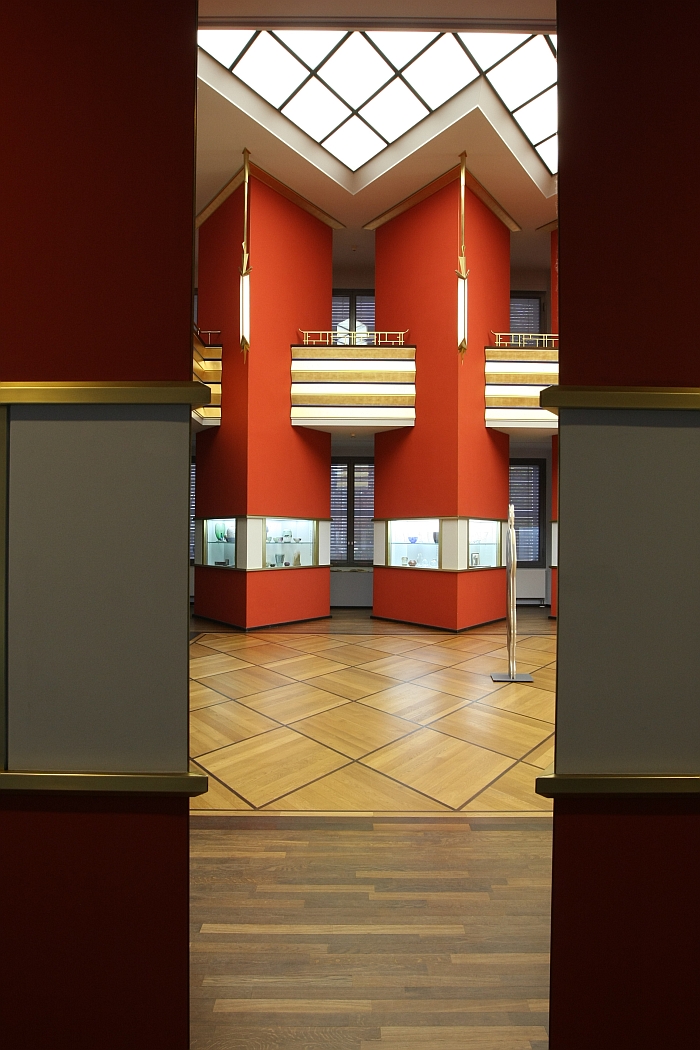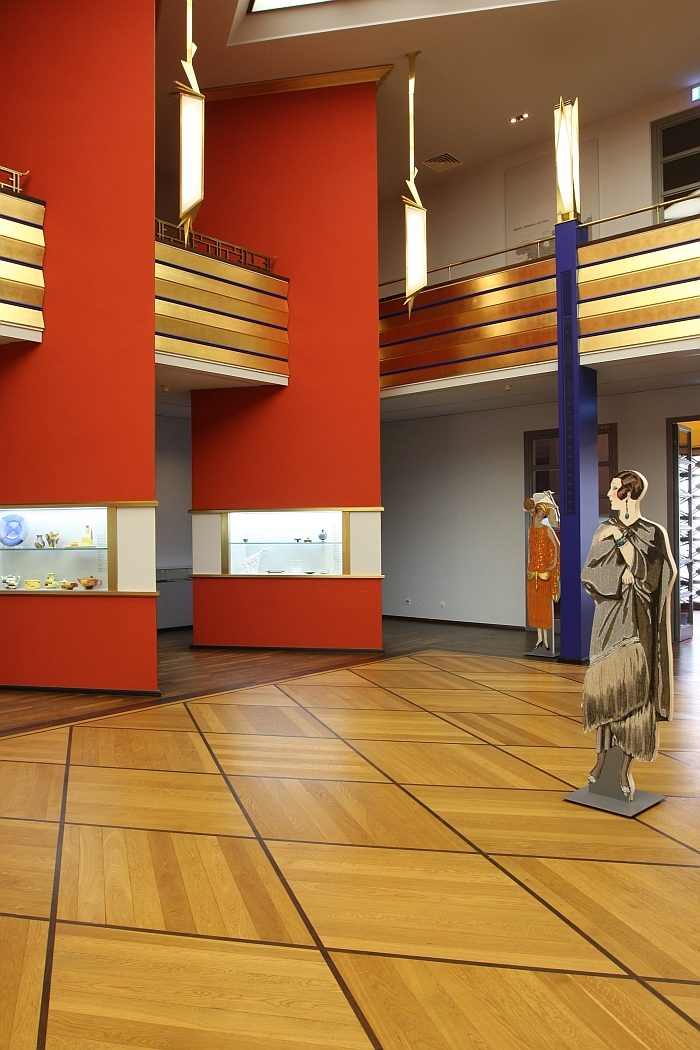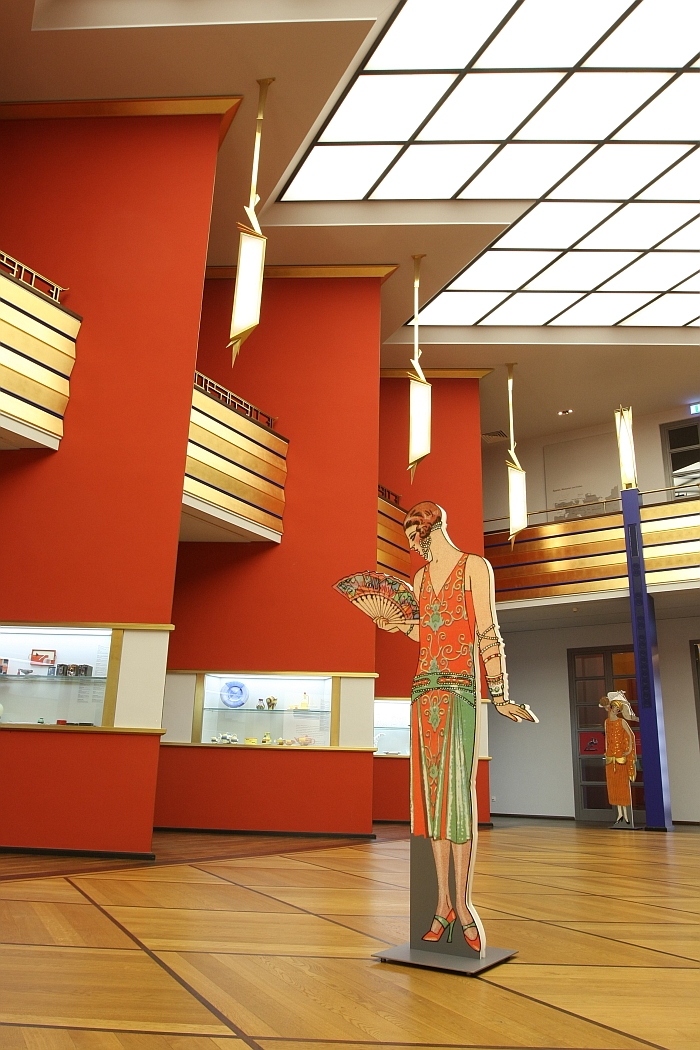All with an interest in and/or a desire to understand how historicism in architecture, art and design ceded to modernism could do worse than visit Germany this coming winter.
Following on from the opening of the exhibitions "Art Nouveau. The Great Utopian Vision" at the Museum für Kunst und Gewerbe Hamburg and "The Bauhaus #itsalldesign" at the Vitra Design Museum, the Grassi Museum for Applied Arts Leipzig have now closed the gap with their new exhibition Art Déco: Smart, Precious, Sensual
That is, if "closing the gap" is the correct term...
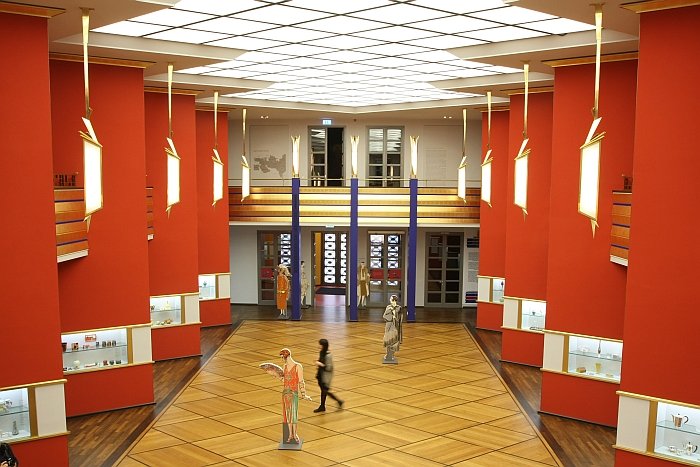
That the Grassi Leipzig should be hosting an exhibition devoted to Art Déco is only logical: not only does the period form a central collection focus of the museum nor only was the the current Grassi Museum building constructed in the early 1920s and display numerous Art Déco tendencies, but with the Pfeilerhalle - the Pillared Gallery - the Leipzig Grassi Museum boasts arguably one of the most splendid Art Déco spaces in Germany. And it is of course here that Art Déco: Smart, Precious, Sensual is being staged.
Presenting some 450 objects from the museum's own collection the exhibition is, owing to the nature of the Pfeilerhalle, a cabinet exhibition; however, despite the limitations imposed by the space the exhibition still allows the visitor to approach Art Déco in a more informed and critical manner than is normally the case.
The right hand side of the hall presents purely German works, including objects by designers such as Richard Süßmuth, Paul Scheurich and Ludwig Gies in addition to manufacturers as varied as, for example, Meissen Porcelain, Ruppelwerk Gotha, WMF and Kodak, the latter being represented through Walter Dorwin Teague's Beau Brownie cameras. The left hand side is devoted to objects from Austria, France, Italy, Scandinavia, Czechoslovakia, Holland and the United Kingdom, including works from the likes of Josef Hoffmann, Harald Nielsen or William Hutton & Sons, Sheffield; a curatorial decision which serves not only to underscore the international nature of the movement but to allow for an international comparison of materials, styles and processes.
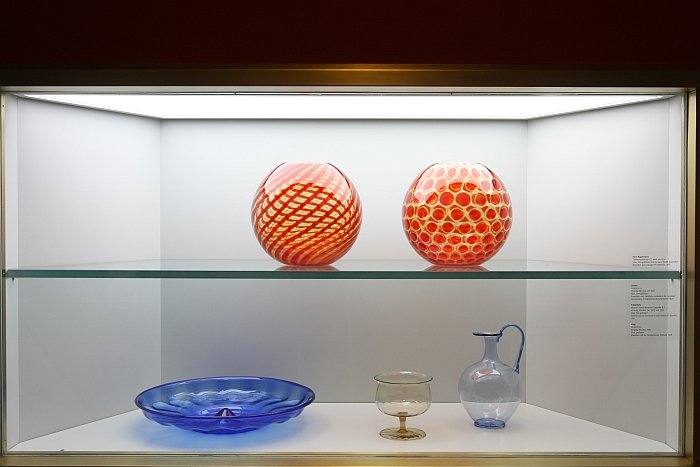
It is very easy to class Art Déco as the superfluous movement of the inter-war years, or indeed as a bit of over fastidious theorising by post war art historians keen to further sub-divide the already fragmented (hi)story of architecture and art. The Modernists would, one feels, have found their way out of Art Nouveau with or without the development of new formal and aesthetic ideas beyond and at times in opposition to those of Art Nouveau, they didn't need the stepping stones. However viewing "Smart, Precious, Sensual" one can understand many of the objects as intermediates on the way from the flowing organics of Art Nouveau to the strict geometry of Modernism, and thus understand the experiments being undertaken as helpful, useful, and yes, important.
Yes, some of the objects are unnecessarily playful, some horribly over styled, others over decorated or otherwise trying to hard too convince you of their authenticity; however, in the majority of the objects one sees attempts to give organic influences a rigidity, objects which seek to capture the spirit of the age rather than bring life to it, and even objects where decoration of any kind is frowned upon as a Puritan may upon a prawn cocktail flavoured potato chip. In addition it is very obvious that the form and function correlate. Whereas with Art Nouveau inanimate objects are invariably given animal and plant forms, the only objects in "Smart, Precious, Sensual" that have an animal form, are animals. The vases are vases, the cigarette boxes cigarette boxes, the bookends bookends.
That the accompanying texts only superficially explain the associations and contradictions to what came before and what was yet to come, anyone starting out on an exploration of the period is probably advised to participate in a guided tour of the exhibition, or to thoroughly study the permanent exhibition before entering the Pfeilerhalle. For everyone else Art Déco: Smart, Precious, Sensual provides a very nice, succinct overview and presents a clear demonstration of various positions on Art Déco and its place in the development of art, design and architecture.
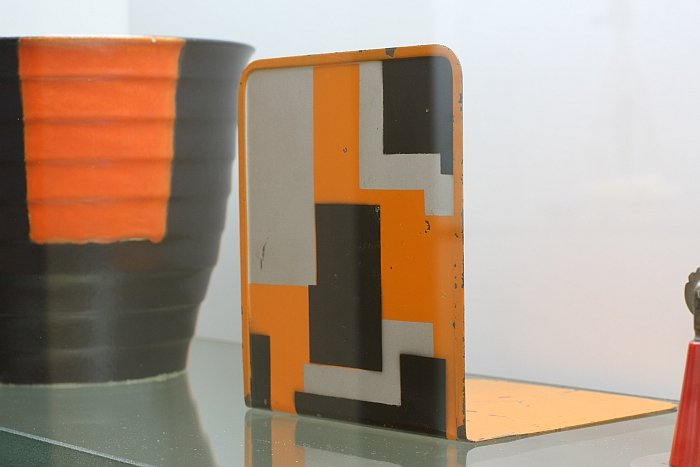
That Art Déco, Art Nouveau and Modernism all ran, in various stages of development, parallel to one another it is all too easy to lose your orientation, to be unsure where one is and what style one is currently viewing... and that is ultimately the most important lesson from Smart, Precious, Sensual: it doesn't matter. Labels may be useful in warehouses, for filing systems or making magazine articles easier to understand, but in art, architecture and design they can be counter productive, can distract from the cultural and social value of an object, from the information an object gives us about the professional development of a designer, artist or architect and from what an object can tell us about how, why and when ideas of form, function and aesthetics developed and evolved
Or to return to our introduction, there was no gap needing closing, no missing link in our aesthetic evolution to be found, just different evolutionary paths to be explained and explored. And once you understand that, the (hi)story of contemporary architecture and design becomes much less daunting.
And is a realisation which also leads one to the understanding that the Pfeilerhalle is not one the most splendid Art Déco spaces in Germany. But one of the most splendid late 1920s spaces in Eastern Germany.
Art Déco: Smart, Precious, Sensual runs at the Grassi Museum for Applied Arts, Johannisplatz 5-11, 04103 Leipzig until Sunday April 3rd. Full details, including information on the accompanying fringe programme, can be found at www.grassimuseum.de
A few impressions:

